'The Wilton Diptych'
Audio description
This is a description of a folding altarpiece made in the late 14th-century for King Richard II of England. It is known as ‘The Wilton Diptych’. Intended for private study and devotion it features vibrant painted scenes of religious and secular imagery. While the artist's identity remains a mystery, this altarpiece is a rare survivor from the Middle Ages. The altarpiece is painted using egg tempera on oak board. This small diptych, is made of two framed, rectangular wooden panels covered in gold leaf and joined by hinges in the centre. The altarpiece can open and close, resembling the pages of a book, and when fully open, it stands independently. It is around 50 cm high by 40 cm wide (when closed). It was designed to be transportable, and this use has affected its condition. For our description, we will study it in its open position, examining both its front (the inner panels) and back (outer panels). The two inner panels form the front of the altar, they are covered with seventeen figures presented against a densely patterned golden background. The scene depicts Richard II being presented by three saints to the infant Christ, who is held by his Mother Mary and surrounded by eleven angels. The design is intricate and richly detailed – the colours blue and gold predominate. On the left panel, the three male saints and the King - who is kneeling and in profile - are all facing the angelic group on the right panel. The male saints stand in a row behind the King and they each have a
shining halo. The man on the far left has a light beard, flowing shoulder-length red hair, and a crown. His blue robes are embroidered with gold. Around his shoulders he wears a heavy green cloak lined with thick white fur. One hand gestures toward the kneeling King, in the other he holds an arrow, identifying him as Saint Edmund. The middle man is older with shoulder-length white hair and a thick white beard. He also wears a crown and white fur robes, holding a gold ring with a large blue stone. This identifies him as Edward the Confessor. The man on the right, by contrast, appears dishevelled with long, unkempt brown hair. His clothes are made of camel skin and he holds a small white lamb. He is Saint John the Baptist. The kneeling King is young with thick reddish hair and a cleanshaven face. His hands are close together in front of him, as if he is praying or preparing to receive something. The King’s robes are red, embroidered with gold patterns and a repeating motif of a male deer. He wears a heavy necklace with a pendant also shaped like a male deer. This male deer is white and is known as a hart – which was the King’s personal symbol. On the right panel, Mary stands facing the King, wearing bright blue robes pulled over her head in a hood. The infant Christ is held in her arms, wrapped in a gold cloth. He leans out towards the King with arms raised as if in blessing. The crowd of angels gather tightly around Mary. Seven stand in a row close behind her, some with their arms around
each other. Another two stand on either side of Mary with the last two kneeling in front of them. Some of the angels look towards the King, others face Christ or talk amongst themselves. Their excited gestures add drama to the scene. The angels look alike: they are fair-faced, young women with strawberry blonde, curly hair. They wear ultramarine blue robes and their tall white wings have black tips. The wings of the angels at the back stand upright in a row; creating a zig-zag line against the gold background. Mary and Christ have golden halos, whereas the angels have garlands of white flowers in their hair. All the angels wear the king’s white male deer symbol - the hart - on brooches on their chests. The angel on the far left holds a flagpole – the billowing flag is white with a red cross, either the flag of the Resurrection or St. George’s Cross. The images on the two outer panels increase our understanding of whom this diptych was made for. The left panel is badly damaged but features a golden lion at the top. The lion is wearing a crown and is standing on a red and white flag. Beneath this, there is a blue and gold shield showing the English royal arms (fleur-de-lis combined with three lions). The right panel is filled with a large white hart sitting on sprigs of rosemary; the same white hart seen across the front of the panels. It has golden antlers and a golden crown and chain around its neck. This again is the personal symbol of King Richard II.


